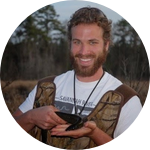About This Project
Populations of the European starling develop distinct song dialects by imitating the calls and songs of other species. I am teaching wild starlings novel sounds, in order to experimentally alter local song culture. I will track the spread of each new sound across populations through social learning. This research will allow us to understand how culture develops, and the roles learning and vocal flexibility play in shaping dialect change over time.
Ask the Scientists
Join The DiscussionWhat is the context of this research?
The presence of culture in animals -- tool use in crows and chimpanzees, vocal dialects in orcas and songbirds -- has long intrigued humans. The song cultures of birds are becoming an important focus because they allow us to understand how our languages evolved. Because culture requires learning from other individuals, it is generally difficult to study. However, birdsong is one form of culture that is relatively straightforward to quantify, and easy to record over time. It is therefore an important topic, both in terms of making connections to human culture, and for understanding behavioral flexibility of individual wild birds.
What is the significance of this project?
Teaching wild birds to imitate sounds has not been done before. However, doing so allows new insight into individual learning, as well as how sounds are then transmitted between individuals. Furthermore, the social learning aspect of this project will get at the root of culture. How exactly do dialects and song cultures form over time? Do certain birds become cultural leaders? By addressing these unanswered questions, scientists can begin exploring deeper questions about culture, and about how the flexibility to learn new sounds evolved.
What are the goals of the project?
I have three nestbox populations of starlings in Lincoln, Nebraska. This past spring/summer, many nestlings grew up in the nestboxes and there will be more every year. My goal is to use a speaker system to introduce different, novel sounds to each population throughout the day. Starlings prefer to copy sounds they hear often, and this playback setup will hold their attention. As my birds learn new sounds, other birds in the populations will begin using these sounds. Over time, a new song culture will emerge in each population. I will continue monitoring my populations and watch as the song cultures change with bird movement around the city.
Budget
Purchasing custom-built speakers (built by the FoxPro company) will allow me to set up an automated playback system. This system is necessary for teaching young and adult starlings sounds, because long-term exposure is essential. Speakers will be durable, solar-powered, and run for months at a time. Another researcher, Dr. Dan Mennill, has used the same speaker system to great effect. Because I am doing my research locally, I do not have other costs in my budget.
Endorsed by
Meet the Team
Maria Goller
I have always been interested in animals, and observing every living thing. Birds are especially fascinating. They are active, inquisitive, often brightly colored, and very vocal. I am interested in combining research with outdoor activities. An avid naturalist, I spent 2 months in New Zealand backpacking (hiking + camping), birdwatching, and taking photographs. Now in graduate school, I am excited to pursue my love of animal behavior and ecology. I am working on two papers about vocal imitation by birds - the evolutionary history of imitation, and the global distribution of mimicking species. I constantly strive to show others why and how birds are wonderful. Studying culture allows me to apply my findings across a wide variety of animals (including humans!). I want to use my research to conserve and preserve the last wild places and rare animals.
Additional Information
This is part of a global project looking at song cultures of starling populations around the world.
Project Backers
- 3Backers
- 2%Funded
- $54Total Donations
- $18.00Average Donation


